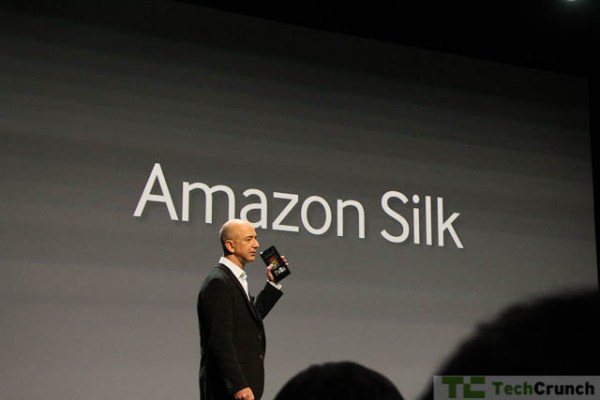Jeff Bezos announced a new family of Kindle’s today, including the Kindle Fire and Kindle Touch. But he also had one more thing. The Kindle Fire tablet is coming with an entirely new mobile browser called Amazon Silk. The browser is “cloud-accelerated” in that it splits tasks between the cloud and the device.
“It is very challenging for mobile devices to display modern websites rapidly,” says Bezos. “So we wondered is there some way we can use the incredible computational horsepower of Amazon EC2 to accelerate mobile web browsing.”
Amazon is taking advantage of its Web services and EC2 compute cloud. Instead of waiting 100 milliseconds for each part of a web page to load, Amazon Silk can cache most of a webpage in the cloud and deliver all the subparts at since. And since EC2 has more bandwidth than a tablet ever will, it can do the same tasks in 5 milliseconds instead of 100.
In a video explaining the browser (watch below), one Amazon engineer describes it like this: “You can think of Amazon Silk as a small store for files you access. What we have done is create a limitless cache used to render the web pages you view every day. It does not take a single byte of storage on the device itself.”
The so-called split browser essentially has two homes: on the Kindle Fire itself, and in Amazon’s EC2. Basically, when a user pulls up a webpage on their Kindle Fire, EC2 handles all the rendering to optimize it for the Fire’s screen. Images are resized on the fly, and what’s more, it tracks user’s behavior. Users who visit TechCrunch all the time, will notice quicker load times because Silk detects that pattern of activity and pre-caches the site. Or similarly, if a lot of people going to the New York Times’ homepage today then click on a set of particular stories, those subsequent pages can be predictively pre-cached and delivered faster.
Amazon calls it “Dynamic Split Browsing,” and while it’s not a terribly new concept—Opera Mini similarly optimized webpages for mobile devices—it’s one that could make a huge difference in a user’s web experience.
